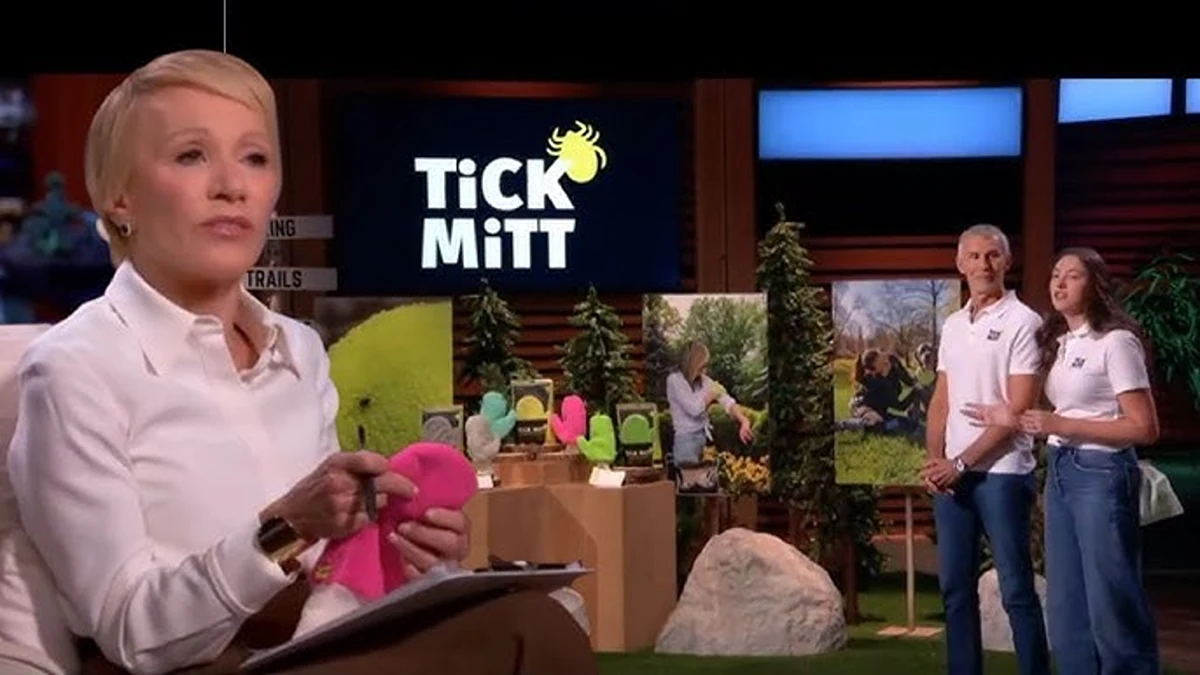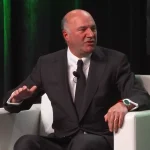
When Tick Mitt, an ingenious, chemical-free tick-removal mitt, stepped into the Shark Tank during Season 16, Episode 20, viewers saw more than just a product pitch.
They saw a deeply personal mission, driven by family, backed by real sales, but not willing to compromise on their brand’s future.
The founders, Steve and Olivia Abrams, turned down offers and left the Tank with no deal. Here’s how it all unfolded and why they made that bold decision.
A Personal Mission Born from Lyme Disease
The story and purpose behind Tick Mitt started off with a painful childhood incident. Olivia Abrams, a girl who was born and brought up in New York, was diagnosed with Lyme disease.
It is an illness that is caused and transmitted by ticks. Thus, her experience left a mark on her father, and together they developed Tick Mitt. Moreover, the brand Tick Mitt designed a reusable microfiber that can trap ticks before they bite. It is engineered to trap ticks’ legs, without relying on chemicals.
After each use, you can put the mitt into a mesh dryer bag, which is further heated for 10 minutes, killing the ticks.
The Shark Tank Pitch: Numbers, Innovation, and Sales
Olivia Abrams and Steve Abrams laid out their solid business plan with emotional investment and passion. They asked for $250,000 in exchange for 20% equity from the investors.
Key highlights included:
- The landing cost of each mitt was about $2.15, while it retails for $19.99.
- Tick Mitt made $432,000 in sales at the time of pitching their brand on the Tank. They also estimated the revenue of $252,000 in the upcoming year.
- Moreover, the product won “Innovation Product of the Year” in a major trade show, which indicated a strong signal of the market potential.
- The mitt captured and killed 90-95% of the loose ticks as per the lab test results.
- Furthermore, they started conversations with over 70 retail chains.
The Sharks’ Offers
As happens in many Shark Tank episodes, the Sharks had mixed reactions:
- Barbara Corcoran, moved by the mission because of her experience with Lyme disease, offered $250,000 for 30% equity.
- Kevin O’Leary made a more complex deal, offering $250,000 for 20% equity, plus $1 royalty per unit until he gets back $2 million.
- Lori Greiner decided to bow out of the negotiations, though she loved the brand and vision because she had a conflict of interest.
- Mark Cuban, along with Daymond John, decided to pass on the offer, as they were concerned about the growth.
Why Steve and Olivia Said No Deal?
Despite the fact that they had two great offers on the table, they decided not to accept any of them because of the high equity and royalty ask by the Sharks.
1. Disagreement Over Equity and Valuation
The Abrams did not accept Barbara’s 30% equity demand. Moreover, the dad-daughter duo believed in the potential of their business and knew it’s worth more than the offer they received. Thus, Steve knew that if he gave up one-third of the brand, the future expansion and fundraising would become more difficult.
2. Royalty Concern and Margin Compression
Kevin’s offer came attached with a $1-per-unit royalty until he recouped $2 million. While royalty deals can be very attractive to Sharks because they guarantee a return.
However, for Tick Mitt, such a structure posed a serious risk. A $1 royalty on a $19.99 mitt could squeeze the margins, especially when selling through retail channels. Steve explicitly noted that the royalty model would hurt distributor margins.
3. Mission-first Mindset
For Steve and Olivia, Tick Mitt was more than a business; it was personal. Olivia’s battle with Lyme disease made the stakes real, and they did not want to dilute their purpose by entering a deal that didn’t align with their long-term goals.
Tick Mitt’s Updates After Shark Tank Appearance
Declining a Shark is not the end of the road — in fact, for Tick Mitt, it might just have been the right path:
- Following Episode 20, they launched KiDS MiTT, a smaller version aimed at children aged 8–12.
- They introduced multi-packs (2-packs, 4-packs, 10-packs) and lifestyle merchandise, including a “Check Your Self” tote bag.
- Tick Mitt is now available via their own website, on Amazon and Chewy, and in physical stores like Orvis, Duluth Trading Co., and Fleet Farm.
- They have made inroads into international markets in Canada, South Korea, Norway, and Sweden.
- After the Shark Tank Season 16 Episode 20 aired, Tick Mitt’s sales reportedly tripled.
- Valuation: Their net worth is now estimated between $2.5 million and $3.3 million.
What Makes Their Decision So Powerful
Here are the reasons which made their decision more powerful.
Staying True to Their Mission
Many entrepreneurs accept funding at the cost of compromising control or dilution of their vision. Steve and Olivia refused to give up too much equity or accept royalty terms that threatened their long-term margins. Their stand shows that staying mission-oriented matters not just to them, but to their customers.
Calculating Growth Over Hype
Rather than opting for a “Shark boost” for the sake of visibility, they leaned into what they already had: validated sales, product-market fit, and retail partnerships. This was not a desperate startup pitch; instead, it was a confident negotiation.
Control Over Brand and Strategy
Taking on a Shark often means not just capital, but also influence. Thus, the Abrams decided to walk away without a deal to retain full control to shape the future of their brand and the go-to-market strategy.
Lessons for Entrepreneurs
Let’s have a closer look at the lessons for upcoming entrepreneurs.
- Before you accept any external capital, recognize your worth. Moreover, be sure about having a realistic valuation and growth strategy.
- You must assess the deal before taking it, as royalty deals and high equity percentages can break profitability.
- Additionally, try growing your brand without a Shark. Strong customer traction and high sales reduce your dependence on capital, so you can develop your brand on your own.
Takeaway
The decision to walk away without taking any deal from the Sharks speaks a lot about the founders. In addition, it teaches many founders that business is not just about raising capital from investors. Rather, it’s about scaling on their own strengths and never compromising on what seems most important to them.


















